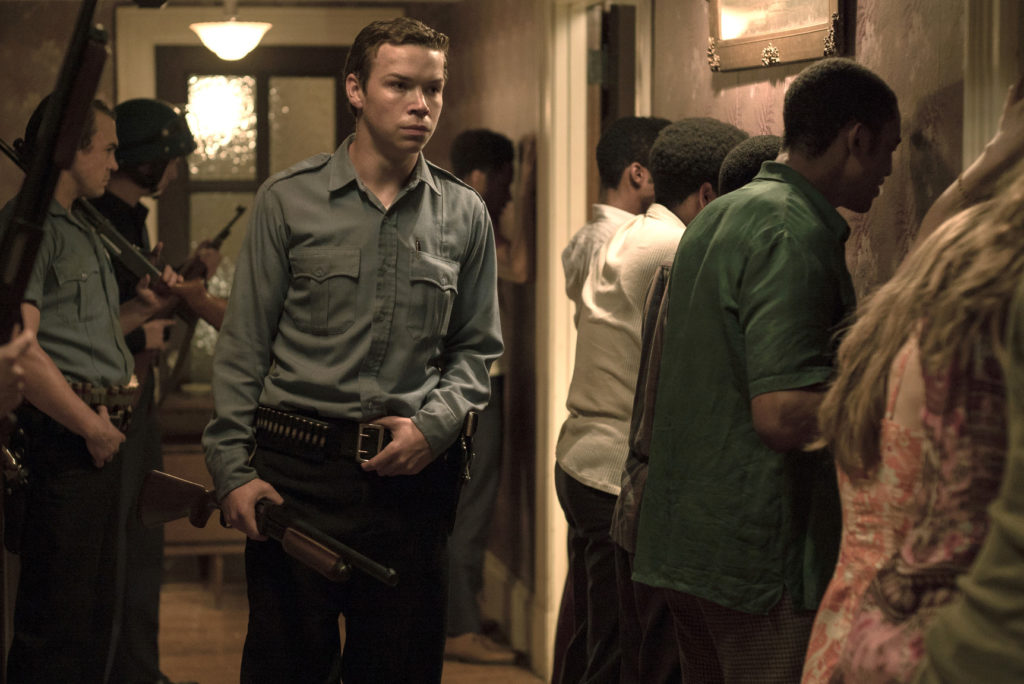Culture & Media
“Detroit” Tells the Story it Set Out To Tell – And That’s Enough
“Detroit” has garnered a host of criticism for its brutality, its narrow focus, its failure to depict important dimensions of the black community. But “Detroit” the movie is not trying to be Detroit the city.

Detroit the movie is not trying to be Detroit the city. Failure to understand this distinction lies behind some of the most vocal criticism I’ve seen of the film.
In the Detroit neighborhood where I grew up, the window signs began popping up in early 1961: “Register To Vote Against Miriani.” Detroit Mayor Louis Miriani, with typical arrogance, refused to even meet with a delegation of black ministers who wanted to talk about race relations in general and the blood lusting excesses of Detroit police. Jerome Cavanagh, a total political unknown, crushed Miriani in the 1961 election with overwhelming support from black voters. Years later, Miriani wound up going to prison for income tax evasion.
A straight line can be drawn from Detroit’s recruitment of white cops from the South to keep black people in check, beginning in the 1920s, to Miriani in the 1950s to illustrate the city’s abiding hostility to black residents. Cavanagh came to office with a more progressive political point of view, but he could do little to reshape the police department. And that brings me to 1967 and the rebellion that sent great swaths of the city up in flames. It also exploded Cavanagh’s potential as a candidate for higher office. And one horrific slice of that conflagration is the focus of Kathryn Bigelow’s film.
So much of the criticism I’ve heard of Bigelow’s Detroit is that it fails to depict important dimensions of the black community, especially the long history of resistance. I grew up with that history and reported on it at both of the city’s dailies, but I had temporarily left journalism the year before the city erupted in black rage. Detroit had the largest and richest chapter of the NAACP and Temple No. 1 of the Nation of Islam. It was the home of the Republic of New Afrika, founded months after the rebellion, and the scene of the New Bethel shootout. It is the city where Dr. Ossian Sweet shot and killed a white protester when he fired on a white mob threatening his home, and Clarence Darrow successfully defended him against a murder charge. But none of that impressive history is the story Detroit set out to tell.
I’ve also heard Detroit taken to task for depicting the murderous cops as just a few bad apples. Perhaps Bigelow was a bit too subtle. When those “bad apples” were on trial, the first several rows in the courtroom were filled by cops in uniform, there to support their brothers. Detroit shows a courtroom of bad apples giving moral support to their murderous comrades.

The three teenage boys killed by police at the Algiers Motel on July 26, 1967.
This is a difficult film to watch. It is a painful film to watch, more so for me because my cousin Fred Temple was one of the three black teenagers shot to death at the Algiers Motel. The sustained torture of the black men and two white women in the motel is pure savagery. The white cops’ racism is raw, brutal, and it drives the tragedy taking place on screen. The film is a descent into unrelieved terror, laying bare the depravity of racists with guns. And the victims are powerless to do anything to fight back.
That impotence, as much as anything, undergirds other criticism I’ve heard of the film. We want to see the good guys get their revenge. We want the bad guys to get their just desserts. But the bad guys win at the Algiers Motel. And they win in court after their trial is moved to a virtually all-white town. Echoes of their crimes continue to this day in the deaths of Freddie Gray, Eric Garner, John Crawford, Michael Brown, Tamir Rice and on and on and on.
Kathryn Bigelow has focused her lens on a very narrow element in Detroit’s 1967 rebellion, a narrow element that reflects a history of rot and corruption flowing from the earliest days of Europeans on this continent and continuing in the relentless body count of extra judicial police shootings of black men and women. Had her film been called “The Algiers Motel Incident,” like John Hersey’s 1968 book, rather than Detroit, perhaps some of the critics would have been more willing to assess it within the limits of its story. Her film does not attempt to tell the story of Detroit. It does not attempt to recount its history. It should be seen for what it is — a terrifying look at the ugliest dimension of American exceptionalism.

-

 Locked OutDecember 23, 2025
Locked OutDecember 23, 2025Section 8 Housing Assistance in Jeopardy From Proposed Cuts and Restrictions
-

 Latest NewsDecember 22, 2025
Latest NewsDecember 22, 2025Trump’s War on ICE-Fearing Catholics
-

 Column - State of InequalityDecember 24, 2025
Column - State of InequalityDecember 24, 2025Where Will Gov. Newsom’s Evolution on Health Care Leave Californians?
-

 Latest NewsJanuary 8, 2026
Latest NewsJanuary 8, 2026Why No Charges? Friends, Family of Man Killed by Off-Duty ICE Officer Ask After New Year’s Eve Shooting.
-

 Latest NewsDecember 29, 2025
Latest NewsDecember 29, 2025Editor’s Picks: Capital & Main’s Standout Stories of 2025
-

 Latest NewsDecember 30, 2025
Latest NewsDecember 30, 2025From Fire to ICE: The Year in Video
-

 Column - State of InequalityJanuary 1, 2026
Column - State of InequalityJanuary 1, 2026Still the Golden State?
-

 The SlickJanuary 12, 2026
The SlickJanuary 12, 2026Will an Old Pennsylvania Coal Town Get a Reboot From AI?

